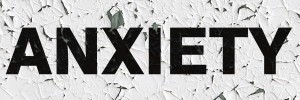Obsessive Compulsive Disorder (OCD) is an extreme form of anxiety. A relentless assault of unwelcome intrusive thoughts characterizes it. I suffered from OCD for several decades, well before I knew what OCD meant. It is becoming increasingly apparent that many people experience repetitive unpleasant thoughts (RUTs) at a level that doesn’t reach the criteria for OCD but is disruptive to their quality of life. They reflect the interaction between the conscious and subconscious brain, and under stress, your physiology transforms into fight or flight. Thoughts can increase in frequency and intensity, and these are stressful times.
The beginning
My anxiety became disruptive one night in 1990 when I experienced a panic attack while crossing the 520 bridge over Lake Washington. I had no idea what hit me, so I tried to tough it out. It was the wrong decision. By 1997, my anxiety became extreme, and I was desperate. I picked up the Seattle Times, which had a front-page article reviewing a book, Tormenting Thoughts and Secret Rituals by Ian Osborne. He was a psychologist who had experienced OCD. It was a relief to know that I was not alone in experiencing these vivid, crazy thoughts. It turned out that I was experiencing “internal OCD,” which does not have any outward behaviors, such as counting and hand washing. I was experiencing endless disturbing thoughts and then countering them with “good” thoughts.
Fighting a losing battle
The harder I tried to fight these thoughts, the more vivid they became. I realized later that your brain develops where you place your attention, and I inadvertently reinforced them. I read several medical review articles on the problem and learned that the prognosis is poor, although there was some success with behavioral therapies and meds. I would even snap a rubber band on my wrist when one of these thoughts occurred. I tried everything imaginable, and nothing worked. Not only was I desperate, but I was also actively suicidal. If you told me I had to live the rest of my life in that state, I would still choose to checkout. Physician Suicide: My Journey
Raw, unrelenting anxiety is intolerable. It is possibly one of the worst experiences of human existence. I now understand that anxiety is not primarily a psychological issue. It is a neurochemical response to the environment. All living organisms have an avoidance response to danger. Humans have the additional problem of unpleasant thoughts being processed in the same brain region as adverse physical input, and the chemical response is the same. Emotional pain and physical pain are equivalent entities.
OCD is intriguing
There is a particular fascination with observing people with this problem, and it is often referred to in a jocular manner. I recall a TV show where a man who counted out a thousand pennies daily was interviewed. Many of you are familiar with the TV show Hoarders. I could never watch it because I was raised in a house where my mother was a hoarder. She saved everything, including plastic milk and butter cartons, magazines, and newspapers. The bedrooms and hallways had two to three feet of junk, and the only reason it was not to the ceiling was because the four of us children would clean out the house every three to four months. It was confusing because we always thought we were helping, and she would become furious at us. It is easy to look at the Hoarder show and be judgmental. They only deserve compassion. Their suffering is extreme, and their lives are being consumed by anxiety. This is not the way that life was supposed to be. Additionally, consider the other manifestations of OCD that can be almost as problematic:
- Eating disorders – over or under-eating
- Body Dysmorphic Disorder (focus on minor physical flaws)
- Trichotillomania (hair pulling)
- Health anxiety (hypochondriasis)
- Tourette’s Disorder (involuntary vocal and motor tics)

Although the incidence of classic OCD is reported to be only about 2-3% of the population, everyone has anxiety. It isn’t easy to define when it disrupts one’s quality of life. Here is my wordplay on the progression:
- Alert
- Nervous
- Anxious
- Afraid/ fearful
- Paranoid
- Terror
Your unconscious brain
Since anxiety is the body’s automatic response to a real or perceived threat, it is part of the unconscious brain, which is approximately one million times stronger than the conscious brain. You cannot control it. Any attempt to do so places neurologic energy in that direction and reinforces it. The essence of creating disruptive anxiety is trying to prevent it. We all know, and it has been documented, that trying not to think about something causes you to think about it more. (1)
Thought suppression
Research shows that thought suppression causes damage to the hippocampus of your brain, which is the area of your brain that processes short and long-term memory. (2) Indeed, in chronic pain, your brain physically shrinks, and you lose some ability to process information. (3) Fortunately, it returns as you heal. Thought suppression has also been shown to be linked to opioid addiction. (4)
You cannot control your thoughts or emotions without paying a significant price. I was a master of suppression to the point that I did not know what the word anxiety meant. Even if you feel you successfully suppress it, you will experience some or many other physical symptoms connected to a fired-up nervous system. I had 16 of the over 30 possible manifestations during the worst part of my ordeal. It all sounds dismal, and the general feeling about anxiety disorders, especially OCD, is that you can manage the symptoms but not generally solve OCD. I am not only fine but am thriving.
Once you understand that anxiety is pain, you can move past and through it. That is how the DOC process was born and has continued to evolve. You will discover which approaches work and which don’t and use them indefinitely.
As you learn to live with uncomfortable feelings, they will lose power over you. A poem came across my desk at the core of solving disruptive mental pain.
Unconditional
“Willing to experience aloneness,
I discover connection everywhere;
Turning to face my fear,
I meet the warrior who lives within;
Opening to my loss,
I gain the embrace of the universe;
Surrendering into emptiness,
I find fullness without end.
Each condition I flee from pursues me,
Each condition I welcome transforms me
And becomes itself transformed
Into its radiant jewel-like essence.
I bow to the one who has made it so,
Who has crafted this Master Game.
To play it is purest delight;
To honor its form–true devotion.”
– Jennifer Welwood

Anxiety is at the core of the human existence. You cannot survive without it or thrive living under its threat. Live with it, experience it, and become comfortable with it. Then, you will become free in a way you never imagined was possible.
Listen to the Back in Control Radio podcast OCD Is No Fun
- Wegener DM, et al. “Paradoxical effects of thought suppression.” Journal of Personality and Social Psychology (1987); 53: 5-13.
- Hulbert J, et al. Inducing amnesia through systemic suppression. Nature Communications (2016); DOI: 10:1038/ ncomms 11003.
- Seminowicz DA, et al. “Effective treatment of chronic low back pain in humans reverses abnormal brain anatomy and function.” The Journal of Neuroscience (2011); 31: 7540-7550.
- Garland EL, et al. Thought suppression as a mediator of the association between depressed mood and prescription opioid craving among chronic pain patients. J Behav Med (2016); 39: 128-138.
